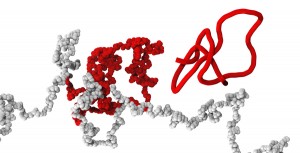I don’t entirely grasp the carpet analogy. Actually, I have no why they used a carpet analogy but here’s the June 12, 2018 ScienceDaily news item about the research,
A work led by SISSA [Scuola Internazionale Superiore di Studi Avanzati] and published on Nature Nanotechnology reports for the first time experimentally the phenomenon of ion ‘trapping’ by graphene carpets and its effect on the communication between neurons. The researchers have observed an increase in the activity of nerve cells grown on a single layer of graphene. Combining theoretical and experimental approaches they have shown that the phenomenon is due to the ability of the material to ‘trap’ several ions present in the surrounding environment on its surface, modulating its composition. Graphene is the thinnest bi-dimensional material available today, characterised by incredible properties of conductivity, flexibility and transparency. Although there are great expectations for its applications in the biomedical field, only very few works have analysed its interactions with neuronal tissue.
A June 12, 2018 SISSA press release (also on EurekAlert), which originated the news item, provides more detail,
A study conducted by SISSA – Scuola Internazionale Superiore di Studi Avanzati, in association with the University of Antwerp (Belgium), the University of Trieste and the Institute of Science and Technology of Barcelona (Spain), has analysed the behaviour of neurons grown on a single layer of graphene, observing a strengthening in their activity. Through theoretical and experimental approaches the researchers have shown that such behaviour is due to reduced ion mobility, in particular of potassium, to the neuron-graphene interface. This phenomenon is commonly called ‘ion trapping’, already known at theoretical level, but observed experimentally for the first time only now. “It is as if graphene behaves as an ultra-thin magnet on whose surface some of the potassium ions present in the extra cellular solution between the cells and the graphene remain trapped. It is this small variation that determines the increase in neuronal excitability” comments Denis Scaini, researcher at SISSA who has led the research alongside Laura Ballerini.
The study has also shown that this strengthening occurs when the graphene itself is supported by an insulator, like glass, or suspended in solution, while it disappears when lying on a conductor. “Graphene is a highly conductive material which could potentially be used to coat any surface. Understanding how its behaviour varies according to the substratum on which it is laid is essential for its future applications, above all in the neurological field” continues Scaini, “considering the unique properties of graphene it is natural to think for example about the development of innovative electrodes of cerebral stimulation or visual devices”.
It is a study with a double outcome. Laura Ballerini comments as follows: “This ‘ion trap’ effect was described only in theory. Studying the impact of the ‘technology of materials’ on biological systems, we have documented a mechanism to regulate membrane excitability, but at the same time we have also experimentally described a property of the material through the biology of neurons.”
Dexter Johnson in a June 13, 2018 posting, on his Nanoclast blog (on the IEEE [Institute of Electrical and Electronics Engineers] website), provides more context for the work (Note: Links have been removed),
While graphene has been tapped to deliver on everything from electronics to optoelectronics, it’s a bit harder to picture how it may offer a key tool for addressing neurological damage and disorders. But that’s exactly what researchers have been looking at lately because of the wonder material’s conductivity and transparency.
In the most recent development, a team from Europe has offered a deeper understanding of how graphene can be combined with neurological tissue and, in so doing, may have not only given us an additional tool for neurological medicine, but also provided a tool for gaining insights into other biological processes.
“The results demonstrate that, depending on how the interface with [single-layer graphene] is engineered, the material may tune neuronal activities by altering the ion mobility, in particular potassium, at the cell/substrate interface,” said Laura Ballerini, a researcher in neurons and nanomaterials at SISSA.
Ballerini provided some context for this most recent development by explaining that graphene-based nanomaterials have come to represent potential tools in neurology and neurosurgery.
“These materials are increasingly engineered as components of a variety of applications such as biosensors, interfaces, or drug-delivery platforms,” said Ballerini. “In particular, in neural electrode or interfaces, a precise requirement is the stable device/neuronal electrical coupling, which requires governing the interactions between the electrode surface and the cell membrane.”
This neuro-electrode hybrid is at the core of numerous studies, she explained, and graphene, thanks to its electrical properties, transparency, and flexibility represents an ideal material candidate.
In all of this work, the real challenge has been to investigate the ability of a single atomic layer to tune neuronal excitability and to demonstrate unequivocally that graphene selectively modifies membrane-associated neuronal functions.
…
I encourage you to read Dexter’s posting as it clarifies the work described in the SISSA press release for those of us (me) who may fail to grasp the implications.
Here’s a link to and a citation for the paper,
Single-layer graphene modulates neuronal communication and augments membrane ion currents by Niccolò Paolo Pampaloni, Martin Lottner, Michele Giugliano, Alessia Matruglio, Francesco D’Amico, Maurizio Prato, Josè Antonio Garrido, Laura Ballerini, & Denis Scaini. Nature Nanotechnology (2018) DOI: https://doi.org/10.1038/s41565-018-0163-6 Published online June 13, 2018
This paper is behind a paywall.
All this brings to mind a prediction made about the Graphene Flagship and the Human Brain Project shortly after the European Commission announced in January 2013 that each project had won funding of 1B Euros to be paid out over a period of 10 years. The prediction was that scientists would work on graphene/human brain research.
